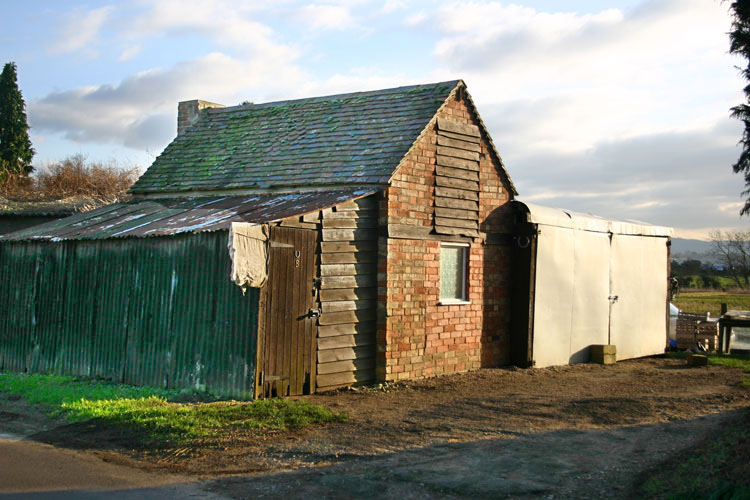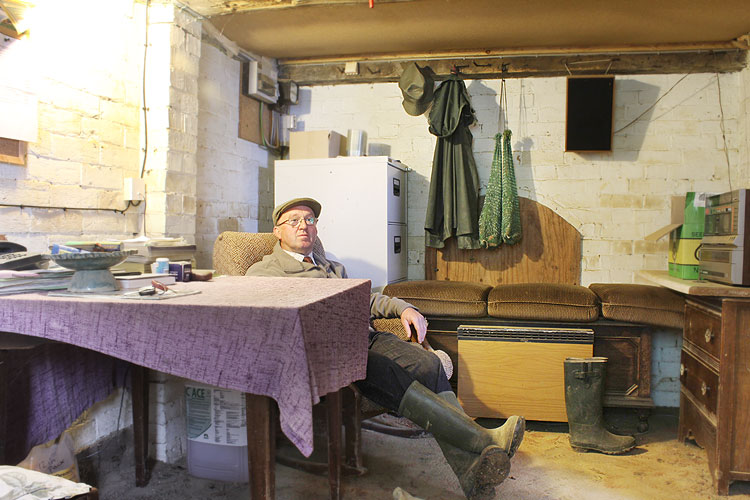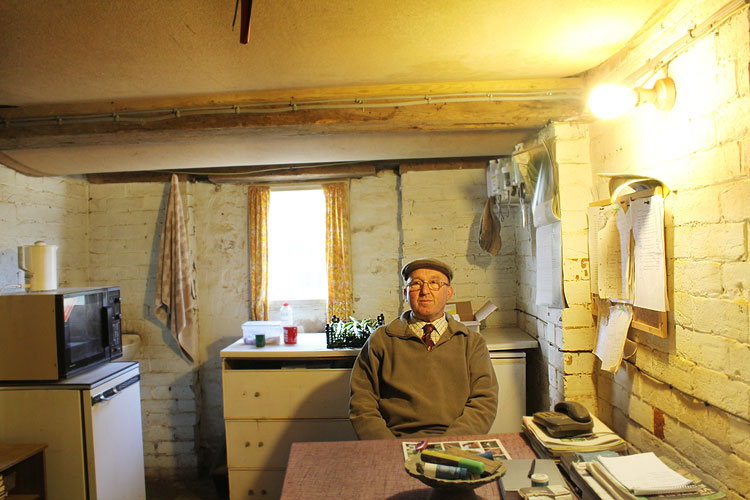In the Vale of Evesham, market gardeners' huts are called 'hovels'. Around Badsey, the market gardening industry became the main source of employment from about 1890. Many were small family businesses, often working several different plots of land some distance apart. Unlike a conventional farm with a farm house at its centre, market gardeners lived in village houses and expected to walk or cycle some distance to their different plots of land.
Many market gardeners were tenants. In Badsey, when a tenant put up a hovel, he knew he was likely to recover cost of doing this when his tenancy came to an end. The Evesham Custom gave tenants the legal right to recover the cost of improvements they made to the land, such as erecting buildings and planting orchards.
The hovels were important because they provided a place to store tools and produce. But they were also a place to eat meals and shelter from the rain. In prolonged bad weather, people gathered in hovels to talk and, perhaps for a game of cards. Some hovels had a small fire place and were quite comfortable. In some rare cases men lived in their hovel, particularly if they found life at home intolerable.
Hovels were once very common around Badsey. The 1910 - 1915 land valuation survey for the area has more than a hundred references to sheds and hovels, most of which would be buildings of this kind. Very few survive today. The valuation survey tells us that the great majority of hovels were built of wood and corrugated iron. Occasionally, thatch was used for the roof. Sometimes a small chimney stack built of brick was added on one side.. Unfortunately the older wood and iron hovels have generally deteriorated and been lost. But there were just a few that were built from brick with a tile roof. One of these can still be seen on Sands Lane, Badsey.

The Sands Lane hovel
This brick and tile hovel is still used by Robert Bindoff. He works the adjoining ground called Yew Close that lies between Sands Lane and Bully Brook. Robert is now a part-time market gardener. He grows crops like radishes and runner beans which he sells at the small Bennets Hill wholesale market. He has made the hovel a comfortable place to work and relax. It is dry, warm in winter and cool in the summer. He no longer uses the fireplace and has an electric convector heater. There is now a telephone and a microwave.
This brick hovel is described in 1913 in the land valuation survey as a 'brick and tile shed'. There is also a reference to a 'wood and iron shed' which could be the building next to it. The survey map shows the building in the north west corner of the Yew Close plot (reference 609). At that time the tenant was John Keen and the land was owned by the J P Lord estate. There were twelve rows of Pershore plum trees and a glasshouse also stood on the plot.
The brick hovel predates 1913. It is not shown on the 1905 OS map, but the 1883 OS map seems to show it, although this could be an earlier building in the same position. It almost certainly dates from the early days of market gardening around the beginning of the twentieth century.


